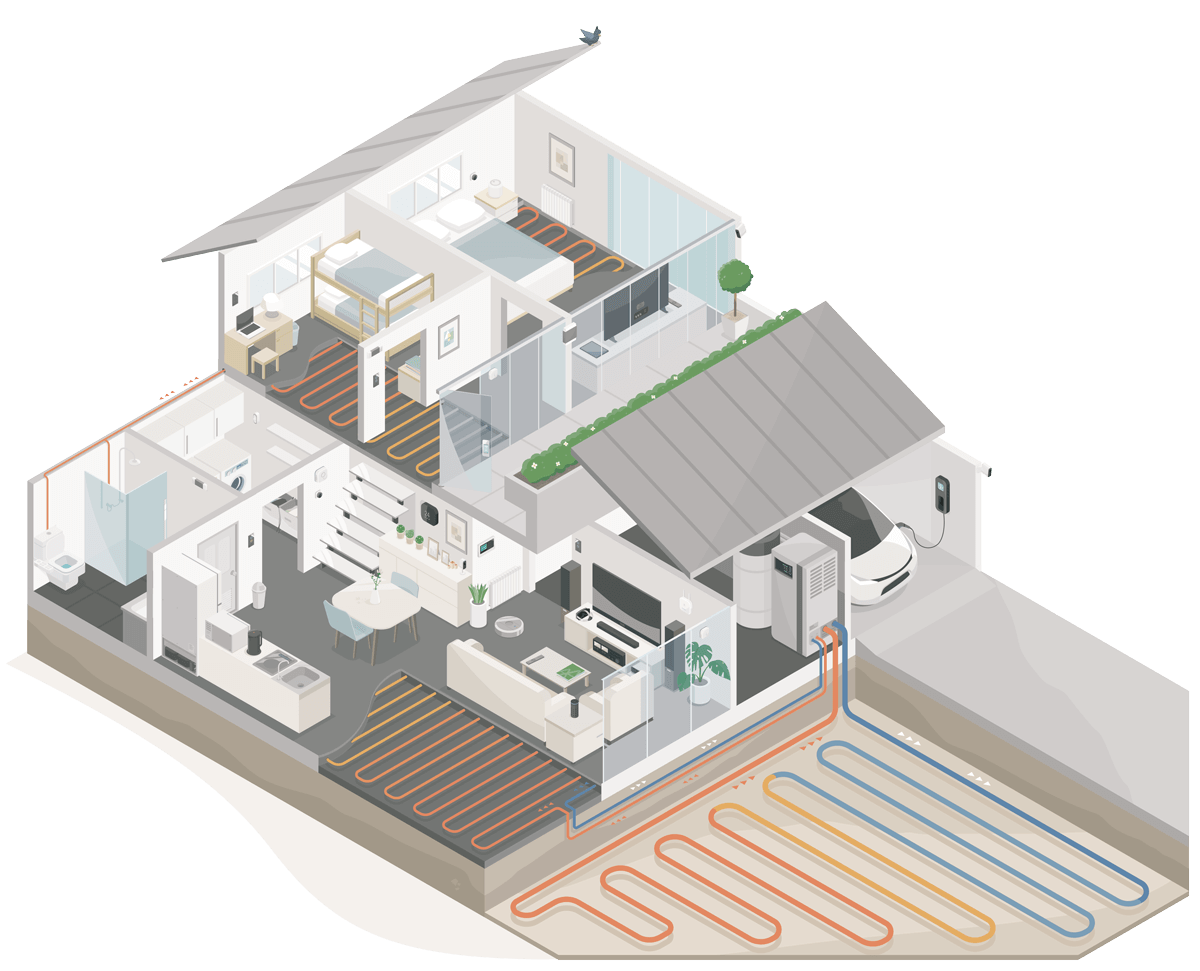Ground Source Heat Pumps
A ground-source heat pump is an eco-friendly and energy efficient way to heat your home, using the heat from a ground loop.
How they work
Ground source heat pumps work on a similar principal to air source heat pumps, only the heat energy is being extracted from the ground rather than the air.
Heat energy from the ground extracted via a loop of pipe, known as a ground loop, which is buried in the ground approximately 1 metre deep or, if space is limited, located in a vertical borehole drilled to accommodate the pipe loop. The heat pump circulates a mixture of water and antifreeze around this loop and heat from the ground is absorbed into the fluid which then passes through a heat exchanger to transfer the heat energy into your home. Ground temperatures under the surface stay at a fairly constant 10-12°C and this year-round consistent temperature provides an even heat source in the winter and the possibility to utilize the low underground temperature for cooling during summer months.
Heat pumps are extremely efficient, often producing between 3-4kWh of heat energy for every 1kW of electrical energy consumed. This is an efficiency of 300-400% compared to a new gas boiler, where the efficiency is typically around 90%
Heat pumps work all year round, even when the outside air temperature is below 0°C.

Ground-source heat pump – How It Works
Watch this animated video showing how a ground-source heat pump works.
Suitable properties
Heat pumps can be fitted to most types of residential property, and work best with low temperature heating systems, such as underfloor heating. For a ground source heat pump, you’ll need enough space in your garden to install ground loop piping laid in a trench around a metre deep or a borehole can be drilled to house the ground loop if there is insufficient space.

